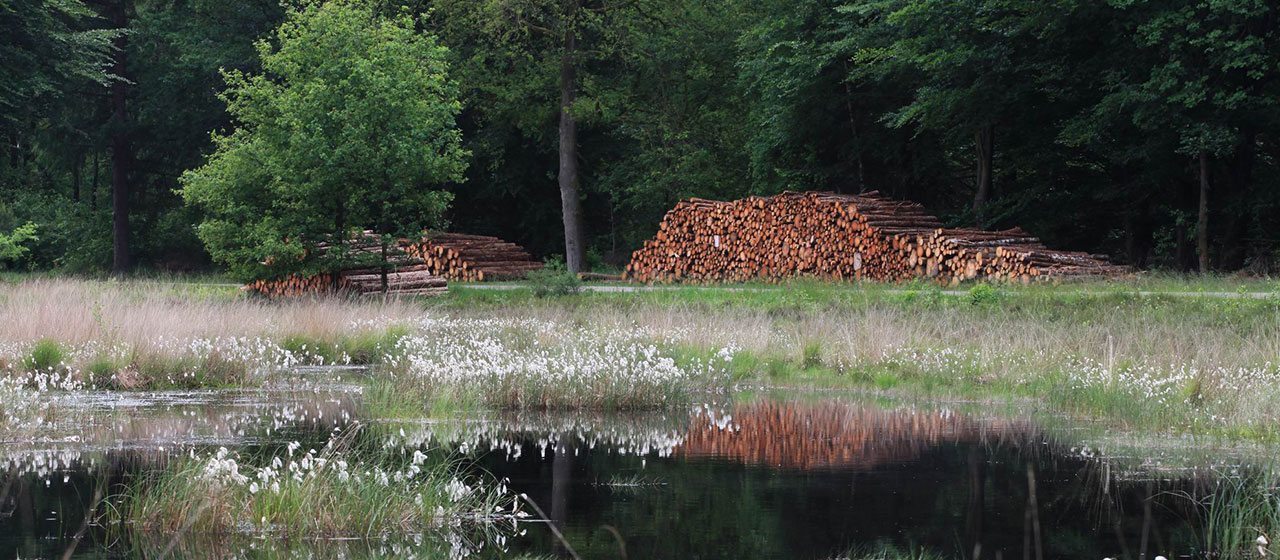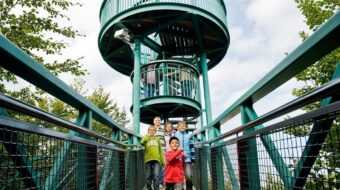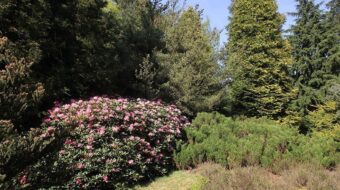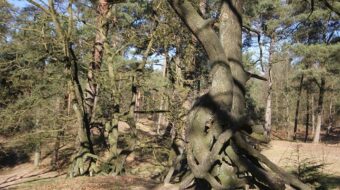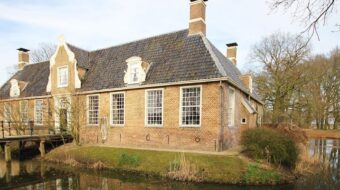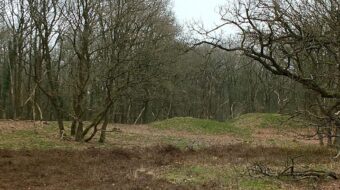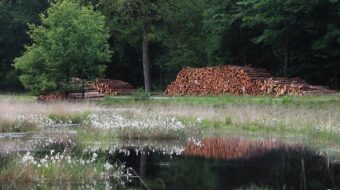Hondsrug forests come and go, and come again
Twelvethousand years ago the last ice-age was over and our area was getting considerably warmer and wetter. The barren plains became overgrown, first with shrubs, then with forests. On the boulder clay ridges of the Hondsrug area dense forests developed, consisting of Linden, Oak and Beech. The swampy bottomlands along the brooks were covered by forests of mainly Alder, Hazel and Birch. The Hondsrug area would have become an impenetrable jungle if humans had not appeared on the scene….
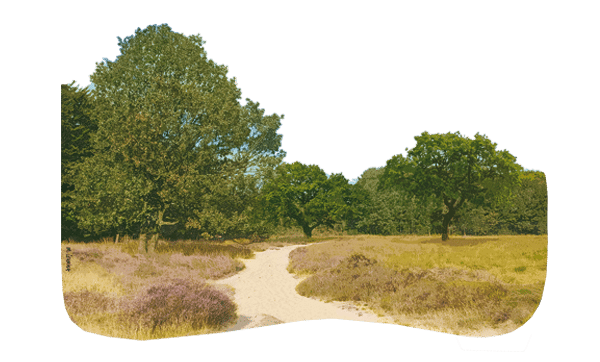
The impact of farming
Around 5000 B.C. the first farmers started clearing patches of forest to develop their small fields. Every few years the soil was exhausted and the farmers moved on to clear new fields. This slow clearance of forests did not just occur on the higher grounds alone but also in the lower valleys, where farmers needed pastures and meadows. Eventually the forests disappeared almost everywhere and only residual patches of old forest remained.
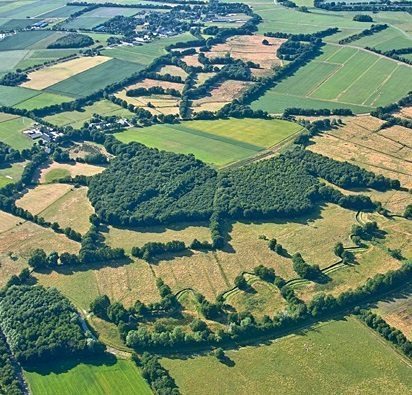
Old forest
Over time the Hondsrug area was gradually losing more and more of its forest cover and towards the end of the nineteenth century less than two percent of Drenthe was left covered with forest. Only small patches of the ancient forests remained. The old forests or ‘Holts’ were essential to provide building materials for the farm communities. You can still get a feel what the ancient woodlands looked like in the Amerholt and the Valtherspaan (today this is no longer a identifiable forest but has grown into the Valtherbos, also rich in celtic fields). Also the woodlands surrounding estate De Klencke belong to the oldest forests.
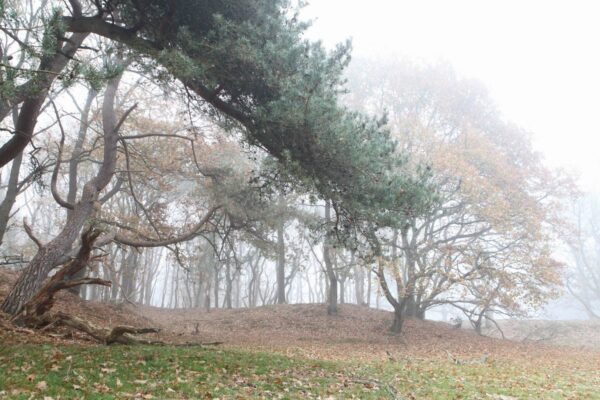
Oak coppices
Along Drenthe’s townfields rows of short rotation Oakwood coppiced forests can be found. Every ten years or so these trees were harvested for use as wood for furnaces and other material use like. The soils where these forests are located often are too wet for other use. Coppiced forests are recognizable by multiple stems from one stump.
Oak tanglewoods or Strubben
Along the edges of moors historically patches of oak-wood forest are found, locally called ‘Strubben’. These small forests provided shelter and foraging grounds for sheep when bad weather hit the moors. Avoiding weather conditions they stayed in these bush-like forests chewing on young oak saplings, clipping the trees down to interestingly formed, bonsai-like, bushes. Once the sheep disappeared, these bushes grew into fantastically tangled shapes called strubben. Beautiful examples of these old ‘strubben’- forests can be found near Schoonloo and Schipborg.
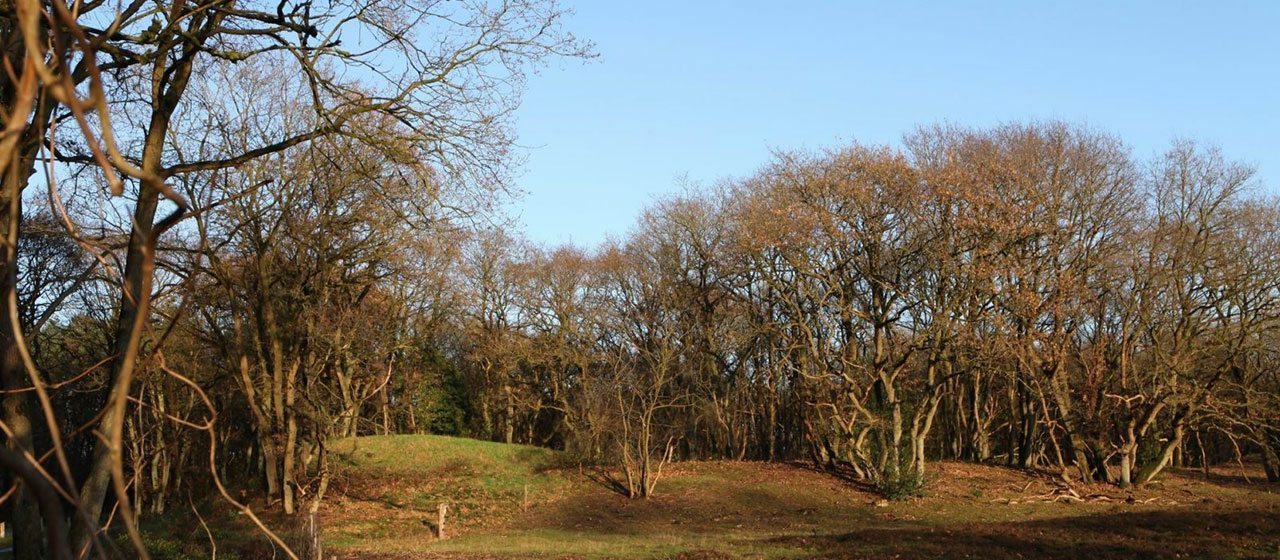
Pines in the sand
By the end of the nineteenth century the farmers in Drenthe started planting forests to control the spreading of the drifting sands. Because of agricultural expansion and intensive use of the moors the drift sands had grown over time. With cold easterly gales in springtime, arable fields in the vicinity of these sandy plains could quickly get overblown by sand and the crops died in the process.
By planting Scots pine they managed to pin the sand-dunes in place to avoid this process from taking place. Nice examples of these drift-sand-cultivations are the Emmerdennen and the forests around the Zeegser Duinen
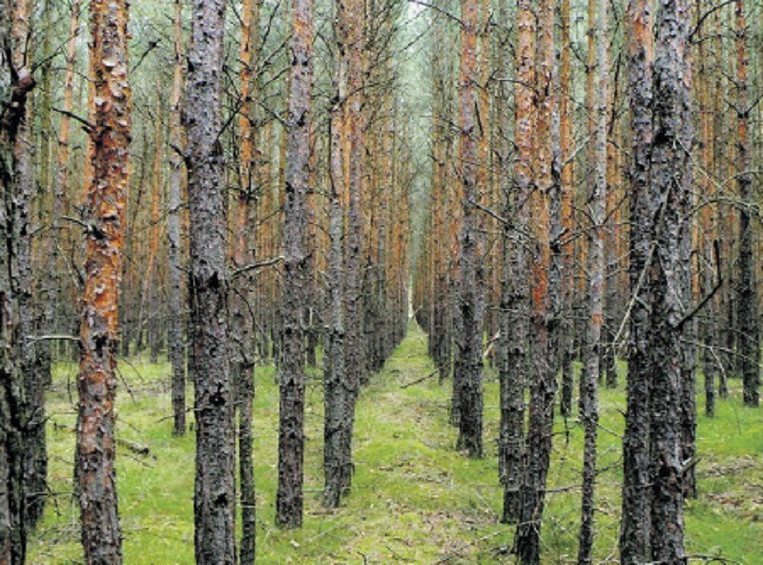
Heathland reforestation, State Forests
Starting the twenties and thirties of the twentieth century thousands of acres of forest were planted on the heathlands and before the end of the last century the amount of land covered by forest had doubled in size. Following the large scale introduction of artificial fertilizers the herds of sheep had disappeared as farmers no longer needed the sheep dung. More and more individual owners started reclaiming their part of the moors. The best grounds were used as arable lands and pastures. However lumber production was also a lucrative business as there was a large demand for lumber from the coal mines in Limburg, so some parts were reclaimed for production forestry.
By the end of the nineteenth century the government got involved in the exploitation and planting of forests on the heathland, starting the State Forestry organisation as it still exists today. At the moment the State Forestry organisation manages around 20-thousand hectares (about 50-thousand acres) of forests in the Hondsrug area. The structured way of development of the old state-forests is still visible. Straight forest roads encompass lots of 300 by 300 meters (990 by 990 feet). Many forests were planted as mixed forests were pine- and deciduous-trees were planted alongside each-other. Part of the State-forests at Sleenerzand still consists of mixed forests like this.
Return to a more natural forest
Starting from the seventies and eighties of the last century more and more places in the Drenthe forests started natural churn of trees. Seeds of trees in the surrounding areas germinated on open spaces and grew to full trees. The use of this natural turn-over became the new way of forest management with the State-Forest Organisation. By regularly thinning of the existing forests and creating open spaces the development of a more natural forest is stimulated. A nice example is the Schapenpark near Odoorn.
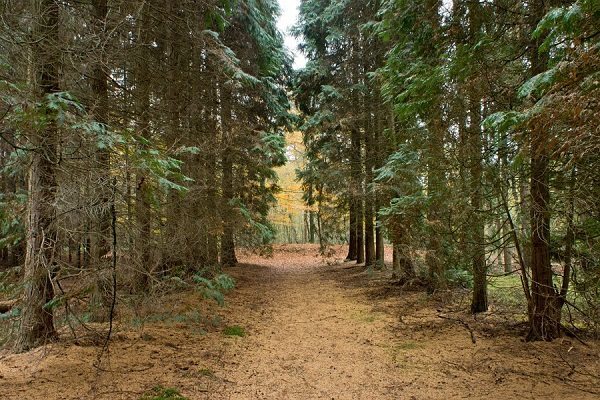
You can start exploring the forests of the Hondsrug at the ‘Boomkroonpad’ outdoor activity center in Drouwen.

